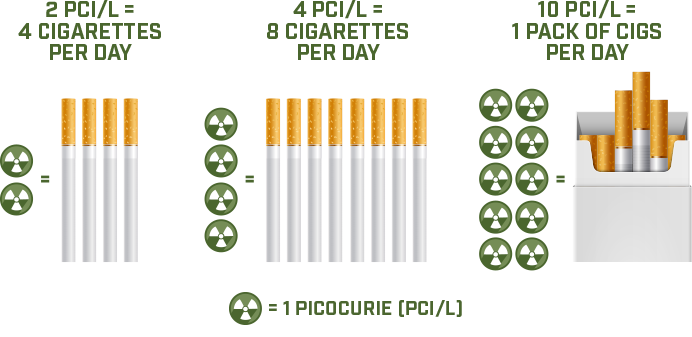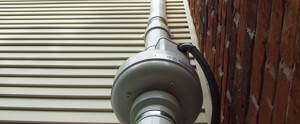Radon Levels Explained
Most radon tests will have the results express in terms or picocuries which refers to the amount of radioactivity of radium in a liter of air.
* The US EPA action level for radon is 4 picocuries per liter of air (pCi/L), at which point mitigation to reduce radon levels is recommended. 4.0 pCi/L of radon is comparable to smoking 8 cigarettes per day.
* US EPA Citizen's Guide to Radon, 1986





